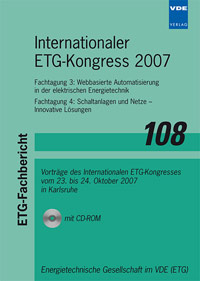High-Power Supercables to Relieve Bottlenecks in the European Energy Grid
Conference: Internationaler ETG-Kongress 2007 - Fachtagung 3: Webbasierte Automatisierung in der elektrischen Energietechnik / Fachtagung 4: Schaltanlagen und Netze - Innovative Lösungen
10/23/2007 - 10/24/2007 at Karlsruhe, Germany
Proceedings: Internationaler ETG-Kongress 2007
Pages: 9Language: englishTyp: PDF
Personal VDE Members are entitled to a 10% discount on this title
Authors:
Willén, Dag; Waschk, Volker (nkt cables Gmbh)
Abstract:
Large-scale renewable energy plants are an increasing part of the energy mix of Europe, Asia and the Americas. The GW-scale energy flow from off-shore wind parks create increasing transits in the electric grids of more and more European countries. Today, the physical bottlenecks prevent the optimal expansion and use of wind power. At the same time, network operators and energy producers face increasing demands of reduced impact, minimised physical footprint of installations, and reduction of electromagnetic fields. The EU-supported Smart Grids report as well as American and Asian grid operators identify superconducting components as enabling technologies. nkt cables have chosen to develop HTS power cables at the medium voltage to enable an earlier adoption of the technology. The experience now includes a 30 kV HTS cable in the Copenhagen grid operated for two years and, as the latest status, a 200 m HTS Triax cable operated for one year in the grid of the Columbus, OH utility AEP. There are plans for multiple-km installations. In this article, electrical and economic properties of transmission lines delivering up to GW-level energy at voltage levels of up to 110-150 kV are presented. System examples relevant for the German and Danish transmission grids will be compared to conventional underground technology.


